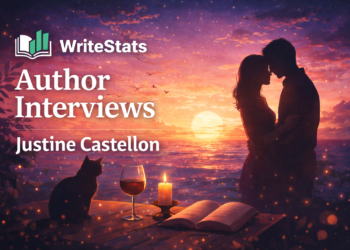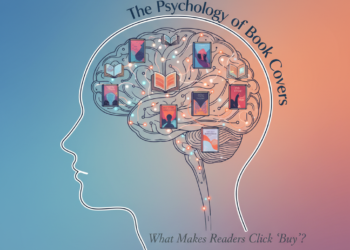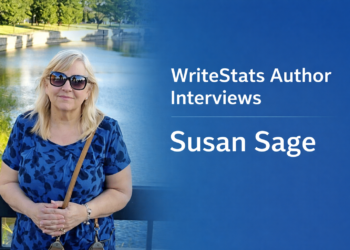Historical fiction has always been more than entertainment. It’s a bridge between past and present, giving readers the thrill of stepping into another era while offering fresh insights into timeless human struggles. For authors, it’s a genre that rewards both creativity and research. And right now, it’s one of the strongest players in the publishing world.
In 2024, the global historical fiction market brought in $12.9 billion and is expected to grow to $14.8 billion by 2030, a steady 2.4% CAGR from 2025–2030. Within the wider fiction market—worth $11.16 billion in 2024—historical fiction represents a substantial slice. In other words, readers aren’t just curious about the past. They’re paying for it.
Why Readers Love Historical Fiction
A U.S. survey revealed that 39% of adults read history-related genres as children, making it one of the top three genres alongside mystery/crime and short stories. That early exposure explains why so many readers return to historical fiction later in life; it scratches both the itch for adventure and the desire for meaning.
Unlike fantasy or sci-fi, which build worlds from scratch, historical fiction transports readers into real times and places. That combination of authenticity and imagination makes the genre endlessly appealing.
Key Trends Authors Should Know
1. Moving Beyond WWII
World War II novels remain popular, but the market is shifting. Readers are increasingly drawn to stories set in the 1920s and 1930s, especially those exploring Prohibition, the Harlem Renaissance, and the Jazz Age.
📖 Example: A novel about a Harlem jazz club owner fighting to keep her business afloat while navigating race, gender, and class tensions could appeal to today’s appetite for character-driven stories in dynamic settings.
2. Spotlight on East Asia
There’s growing interest in stories set in East Asia, from dynastic dramas to modern revolutions. Authors who can bring lesser-known Asian histories to life—primarily through personal, character-driven stories—are well-positioned to stand out.
📖 Example: A story about a Korean comfort woman during WWII, or a multi-generational family saga set in post-war Japan, could resonate with readers looking for perspectives beyond Western Europe.
3. Blending Genres
Readers love crossovers. Historical fiction mixed with romance, fantasy, or magical realism is gaining traction. These hybrids let authors explore history while pushing creative boundaries.
📖 Example: Imagine a historical romance set in Victorian England where folk magic subtly shapes the characters’ lives. The authenticity of the setting, combined with fantastical elements, creates something both familiar and fresh.
Need inspiration? Here are the most-read historical fiction titles of 2025, including The Women, James, and The Nightingale.
Writing Historical Fiction Tips for Authors
Unearth Untold Stories
The best historical fiction doesn’t rehash what we already know; it reveals what’s been overlooked. Seek out marginalized voices and forgotten perspectives.
💡 Tip: When researching, don’t just read official records. Explore diaries, oral histories, and local archives. The everyday lives of ordinary people often make the most extraordinary stories.
Balance Accuracy with Narrative Flow
Historical accuracy builds trust, but the story comes first. If readers feel like they’re slogging through a history textbook, they’ll put the book down.
💡 Tip: Focus on sensory details: smells, textures, foods, sounds. Instead of describing a political treaty, show how it impacted your character’s dinner table or love life.
Tap Into Universal Themes
The best historical fiction resonates because it connects the past to timeless struggles: love, survival, justice, and identity.
📖 Example: A story about a 19th-century textile worker fighting for fair wages can speak to modern readers about labor rights and inequality.
Use Market Data in Your Favor
If you’re querying agents or publishers, highlight the fact that the historical fiction market is worth billions and continues to grow. Show that your story is not only unique but also positioned within a thriving, profitable genre.
Fresh Story Ideas for Today’s Readers
- Prohibition-era women: Bootleggers, nightclub owners, or journalists navigating shifting gender roles.
- Japanese-American life in the 1930s: Exploring resilience before the upheaval of WWII.
- African diaspora in Latin America: Stories of migration, culture, and identity rarely spotlighted in mainstream fiction.
- Historical fantasy hybrids: Myths and folklore woven into real-world history, for example, a Caribbean folktale reimagined during colonial rule.
Final Thoughts for Authors
Historical fiction is thriving because it does more than entertain; it helps readers see the world, and themselves, in a new light. With billions in global revenue, steady growth, and readers eager for diverse stories, the genre is full of opportunity.
As an author, your task is to take readers somewhere they’ve never been before, whether that’s the bustling streets of 1920s Harlem, a hidden village in ancient Korea, or the untold lives of people history left in the margins.
If you can uncover those stories and bring them to life with honesty and imagination, your work won’t just find readers; it will last.
✨ Want more insights like this? Visit WriteStats to explore tools, trends, and data that help authors write smarter and publish with confidence.









